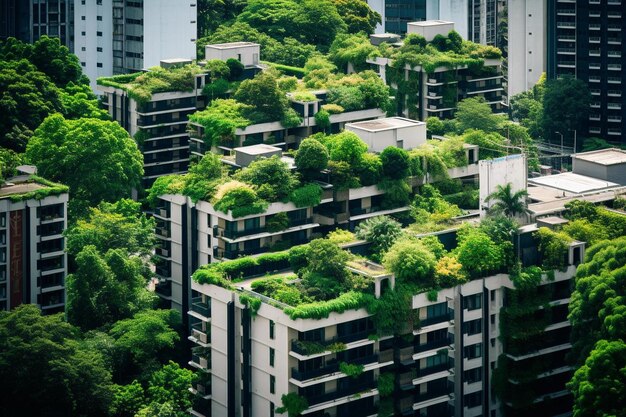What Lies Ahead for Green Housing: The Promising Future
As concerns about climate change and energy consumption grow, the future of green housing is gaining momentum. This shift is influencing not only how homes are built but also how they are financed and lived in. From innovative building materials to smart home technologies, the possibilities are as dynamic as they are sustainable. But what's truly on the horizon for green housing and how can you be a part of this transformative movement?
Innovative Building Materials and Techniques
The foundation of green housing rests on its materials and construction methods. Expect to see an increase in the use of sustainable materials, like recycled steel, bamboo, and reclaimed wood. These are not just eco-friendly but also durable and aesthetically pleasing. Additionally, 3D printing technology is set to revolutionize home construction, offering quicker build times with less waste, optimizing both costs and resources.
Smart Home Technology
The integration of smart home technology is not just a luxury—it's become a pivotal component of green housing. Smart thermostats, energy-efficient lighting, and water-saving devices are common features, allowing homeowners to significantly reduce their carbon footprint. Moreover, solar panels combined with battery storage solutions ensure that homes can operate independently off the grid, becoming both energy-efficient and resilient.
The Rise of Passive Housing
Another trend reshaping green housing is the concept of passive houses. These structures are designed to maintain a comfortable indoor climate without relying heavily on conventional heating or cooling systems. By utilizing natural ventilation, superior insulation, and strategically placed windows, passive houses keep energy usage to a minimum. This technology not only saves money but also encourages sustainable living, making it a cornerstone of future developments.
Government Aid and Financial Assistance
While the move toward greener housing is promising, it's not without financial hurdles. The initial cost for sustainable homes can be high, but numerous government and local initiatives aim to alleviate this burden. Tax credits and subsidies are available for those investing in energy-efficient appliances and renewable energy installations. Additionally, homeowners can explore green mortgages, which offer better terms and rates for investing in eco-friendly properties.
The Role of Financial Tools
If you're not yet ready to invest heavily in green housing but wish to make incremental changes, various financial instruments can facilitate this transition. Consider using credit card solutions designed for eco-friendly purchases, offering rewards or cash back for buying sustainable products. Debt relief options can also free up funds for green upgrades, allowing you to improve your home without breaking the bank.
Educational and Community Programs
Knowledge is power, and educational programs focused on sustainable living can empower individuals and communities to make greener choices. Traditional schools and online platforms offer courses that teach the nuances of sustainable architecture, green technologies, and environmental sciences. Communities can also benefit from seminars and workshops that provide practical skills, from DIY solar panel installation to home energy audits.
The future of green housing looks bright and varied, offering exciting opportunities to enhance the way we live and contribute to a more sustainable world. By tapping into the right resources, whether it's government programs, financial tools, or educational initiatives, embracing this future is not just possible but practical.
Explore These Helpful Resources:
📢 Government Grant Programs: Potential tax savings and direct grants available for energy-efficient home improvements.
🏡 Green Mortgages: Lower interest rates for homes that meet certain energy-efficient criteria.
💳 Eco-friendly Credit Cards: Specially designed for sustainable purchases, offering rewards or cashback.
📚 Educational Resources: Online courses on sustainable architecture and environmental sciences.
🛠️ DIY Workshops: Community initiatives offering hands-on experience in installing and managing green technology.
Embracing the future of green housing is not just an environmental choice, but a smart financial decision. Explore these options to be part of a movement that benefits both your wallet and the planet.
